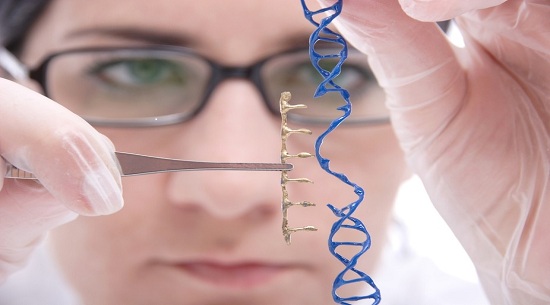Sickle Cell Anemia Patient Cured by Gene Therapy
In a world first, a teenager with sickle cell disease achieved complete remission after an experimental gene therapy at Necker Childrens Hospital in Paris, researchers say.
In a world first, a teenager with sickle cell disease achieved complete remission after an experimental gene therapy at Necker Childrens Hospital in Paris, researchers say.
People with sickle-cell disease, a group of inherited blood disorders, have abnormal hemoglobin in their red blood cells, causing blood to clog in the tiny vessels and organs of the body.
After 15 months since treatment, the patient who began therapy at age 13 no longer needs medication, and his blood cells show no further sign of the disease, according to a case report published Thursday in The New England Journal of Medicine.
"Since therapy was applied, he hasnt had any pain, any complications. He is free of any transfusions. He plays sports and goes to school," said Dr. Philippe Leboulch, an author of the new research and a professor of medicine at the University of Paris. "So we are quite pleased with the results."
This success provides proof of concept for human patients, Leboulch said.
According to Dr. Marina Cavazzana, senior author of the study and head of the biotherapy department at Necker, "all the biological tests we perform lead us to think he is cured." Yet, she added, the answer to the question of whether he is truly cured "can be provided only by the longer follow-up."
Still, hopes are running high that patients with this very devastating disease can receive this therapy "in the next five years," Cavazzana said. "This is our hope, and we work very hard to attain it."
A global burden
Worldwide, more than 275,000 infants are born with sickle cell disease each year. In the United States, approximately 100,000 people, most of African ancestry or identifying as black, currently have it. About one in every 365 black children in the US is born with sickle cell disease, for which the life expectancy is now about 40 to 60 years.
Sickle cell disease is one of the most common gene disorders in the world, explained Leboulch. A genetic mutation causes hemoglobin, the main constituent of red blood cells, to distort the shape of the cell, and this causes the blood to aggregate or clog.
This leads to "tremendous pain, anemia and also lesions of organs that ultimately result in shortness of life expectancy," Leboulch said. "So what we did here was, we tried to inhibit the process of aggregation."
Essentially, researchers extracted bone marrow from the patient, harvested the stem cells and altered the genetic instructions so that they would make normal hemoglobin. Next, they treated the patient with chemotherapy for four days to eliminate his diseased stem cells. Finally, they returned the treated stem cells via an IV into his bloodstream.
"At that point, the new cells that were modified outside the body started to make new blood cells, and we hope this will be stable for the life of the patient," Leboulch said.
Before receiving treatment, the teen had terrible pain and needed blood transfusions, which required twice-yearly hospitalizations, Leboulch explained.
Hope for all patients
Going forward, the plan is to proceed through clinical trials and, if results are promising, make the treatment available to patients. Leboulch and his colleagues are using the same genetic therapy to treat a similar disease called thalassemia, another inherited blood disorder in which patients have less hemoglobin and fewer red blood cells than normal. Severe forms require regular blood transfusions.
Leboulch and his colleagues have global phase 2 and phase 3 trials for the thalassemia treatment underway in France, the US, Australia and Thailand.
For sickle cell disease, a companion trial in the US is underway. "I understand that seven (sickle cell) patients have been treated already. Of course, the outcome is much shorter, and we dont have the results just yet, but its coming along," Leboulch said.
Leboulch also noted that gene therapy is easier on patients than procedures requiring outside donors. Previously, hematopoietic stem cell transplant, which replaces a patients bone marrow with that of a donor, has proved an effective cure for some patients.
According to Dr. Alexis Thompson, president-elect of the American Society of Hematology, the majority of sickle cell disease patients do not have a sibling who would be an appropriate match for bone marrow donation.
"Gene therapy holds promise because a patient serves as his own donor," and the "risks are much reduced" since theres no possibility of a mismatch, said Thompson, who was not involved in this research but is an investigator on a related gene therapy study.





ارسال به دوستان